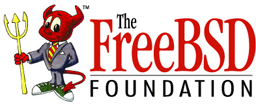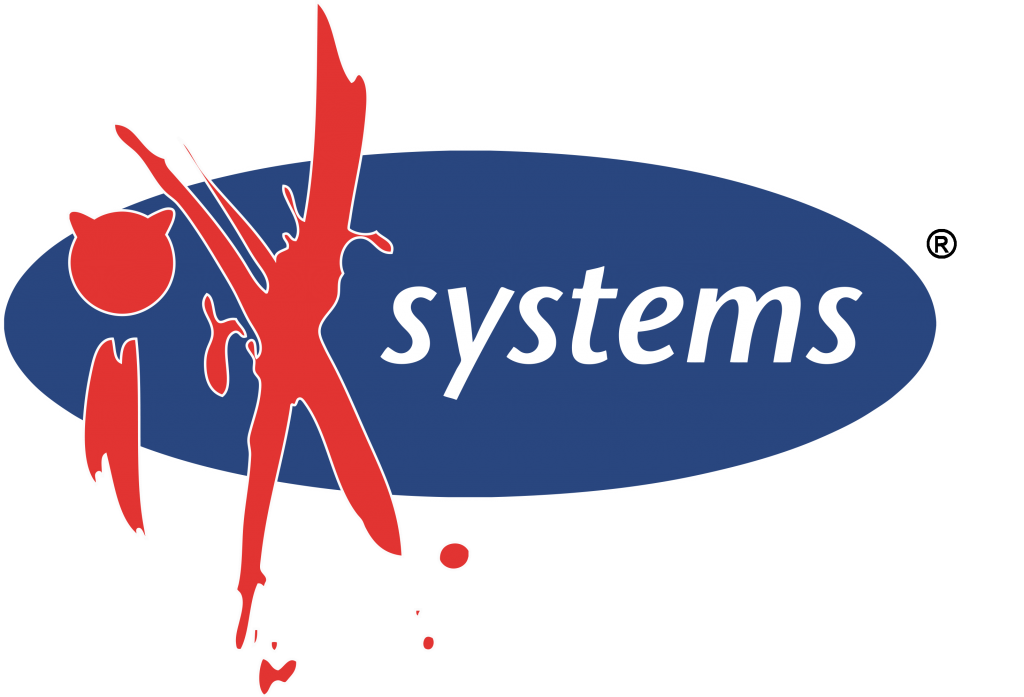|
An Introduction to the FreeBSD |
|---|
| Dr. Marshall Kirk McKusick |
| Who should take this course:
This course provides a broad overview of how the FreeBSD kernel The course is divided into two days. Together they cover the entire |
| Description
This course will provide a firm background in the FreeBSD kernel. |
| Topics:
Day 1 morning – Kernel Overview
Day 1 afternoon – Kernel I/O structure
Day 2 morning – Filesystems Overview
Day 2 afternoon – Networking Implementation
|
| Course Text:
Marshall Kirk McKusick, Keith Bostic, Michael J Karels, and |
| Speaker biography:
Dr. Marshall Kirk McKusick writes books and articles, teaches In his spare time, he enjoys swimming, scuba diving, and |
|
Building The Network You Need With PF, |
|---|
| Peter Hansteen |
| Who should take this course This session is aimed at experienced or aspiring network administrators who want to expand their knowledge of PF, the OpenBSD packet filter, and related tools. A basic knowledge of Unix and TCP/IP network configuration is expected and required. |
Topics potentially covered include
|
| Session information The session will provide updates on the new PF syntax and features introduced in OpenBSD 4.7 (with samples presented in the old and new syntax where appropriate), with newer updates and previews of relevant new features such as the new traffic shaping subsystem introduced in OpenBSD 5.6 and any other PF related improvements in the upcoming OpenBSD 5.6 release (planned release date November 1st, 2014). |
| Session materials The available material (notes and slides I’ve accumulated over the years) covers significantly more than the schedule allows for. To help make the session more targeted to your needs, I would appreciate if you, when you sign up for the session or soon after, send me an email to tutorial@bsdly.net with description of what you would like to learn in this session, and to the extent you are allowed and feel it is appropriate, what your near or longer term future project is.Slides matching the latest version of the tutorial can be found at http://home.nuug.no/~peter/pf/newest/; updated slides will be made available to the general public after the present session has concluded.Timing and logistics allowing, copies of the third edition of Hansteen’s The Book of PF will be available to purchase at the session. (Also see The Book of PF, 2nd edition, No Starch Press November 2010). |
| Speaker biography: Peter N. M. Hansteen is a consultant, writer and sysadmin based in Bergen, Norway. He has been tinkering with computers since the mid 1980s, mainly while working to document how the systems work and why they don’t, in English as well as his native Norwegian. Peter rediscovered Unixes about the time 386BSD appeared. After a few years on Linux, which included participation in the RFC1149 implementation (2001), he eventually migrated all important systems in his care to FreeBSD and OpenBSD.A long time freenix advocate, he is a member of the BLUG (Bergen (BSD and) Linux User Group) core group and a former vice president of NUUG (the Norwegian Unix User Group). During recent years a frequent lecturer and tutor with emphasis on OpenBSD and FreeBSD topics, author of several articles and The Book of PF (3rd edition No Starch Press 2011) and maintains his blogosphere presence at http://bsdly.blogspot.com. |
|
Transition to OpenBSD 5.6 |
|---|
| Peter Hansteen |
| Who should take this course The intended audience or attendee profile is anybody who is considering making the jump to OpenBSD 5.6. You may be considering moving your systems wholly or partly to the new release from an earlier OpenBSD release or to move specific parts of your operation from a different Unix-like operating system to OpenBSD.To help make the session more targeted to your specific interests and needs, I would appreciate if, when you sign up for the session or soon after, send me an email to transition@bsdly.net with a brief description of what you would like to learn in this session, and to the extent you are allowed and feel it is appropriate, what your near or longer term future OpenBSD project is. |
| Description: OpenBSD has been the source of a number of BSD innovations over the years, including but not limited to PF (the OpenBSD packet filter, now including a new traffic shaping engine), significantly improved IPSEC tools, OpenSSH (the free Secure Shell server and client), security enhancements including preemtive exploit mitigation, and various other advances of the art and engineering in various parts of the system.At the time of writing (early May 2014) the big news items for OpenBSD 5.6 seem to be the removal of the legacy ALTQ traffic shaping system after a one release grace period (the new traffic shaping system is now the only option), OpenSMTPD as the default mail transfer agent, the debut of the LibreSSL library as an in-tree developed project, the removal of BIND as the default DNS server in favor of nsd and unbound, plus switching the base httpd to nginx (retiring the forked apache 1.3), but it’s not set in stone yet and every release has enhancements that may not be immediately obvious until you start using the system.This session intends to help you tackle the transition to the newest OpenBSD release, highlighting enhancements in the new release and how to avoid any pitfalls that may turn up during the process. |
| Speaker biography: Peter N. M. Hansteen is a consultant, writer and sysadmin based in Bergen, Norway. He has been tinkering with computers since the mid 1980s, mainly while working to document how the systems work and why they don’t, in English as well as his native Norwegian. Peter rediscovered Unixes about the time 386BSD appeared. After a few years on Linux, which included participation in the RFC1149 implementation (2001), he eventually migrated all important systems in his care to FreeBSD and OpenBSD.A long time freenix advocate, he is a member of the BLUG (Bergen (BSD and) Linux User Group) core group and a former vice president of NUUG (the Norwegian Unix User Group). During recent years a frequent lecturer and tutor with emphasis on OpenBSD and FreeBSD topics, author of several articles and The Book of PF (3rd edition No Starch Press 2011) and maintains his blogosphere presence at http://bsdly.blogspot.com. |
|
Subversion for FreeBSD developers |
|---|
| Stefan Sperling |
| Description FreeBSD switched from CVS to Apache Subversion in 2008. It is the only major BSD operating system using Subversion for version control and one of the largest open source projects using it. This tutorial provides a solid introduction to Subversion geared towards FreeBSD developers.We’ll start with a quick review of Subversion’s design from its conception in the year 2000 and all the features and quirks added during its still on-going evolution.We’ll talk about Subversion’s repository and working copy, merging and merge-tracking, how Subversion’s tree conflict detection feature can help but also get in the way, the why and how of pitfalls associated with renames, and more.FreeBSD’s workflow built around Subversion will be discussed with attendees and reviewed for problems and possible improvements. Attendees are welcome to present any issues they’ve run into with Subversion during FreeBSD development. |
| Speaker biography: Stefan Sperling works as Subversion developer and consultant at elego Software Solutions GmbH based in Berlin. He has been contributing to the Subversion project since 2007. He’s been involved in OpenBSD development since 2008 even though code he produces during hackathons is the result of sleep deprivation more than anything else. At elego he has colleagues working on git and they all get along very well. |
|
Let’s make manuals more useful! |
|---|
| Ingo Schwarze |
| Who should take this course:
This course is intended for the following audiences. For each group, the topic numbers that will be of the most immediate interest are listed, but the other topics are likely to be useful as well.
Attendants are expected to have basic experience using the command-line user interface of UNIX-like operating systems. Basic experience in programming and system administration may help understanding a few points, but is not required. Prior knowledge about documentation formatting and processing tools is not required, but doesn’t hurt either. Ingo Schwarze will try to keep the content accessible for newcomers to the field of documentation formatting, but to also cover the newest developments and tools that specialists in the field will be interested in. If participants drop Ingo Schwarze a mail beforehand to, preferably right after registering, stating their background and/or what they are most interested in, he can use such information to tune the course content towards the audience. |
| Description Manual pages have been a resource of critical importance in UNIX for more than 40 years, since Version 1 AT&T UNIX. The steady evolution of the mandoc toolbox during the last six years allows to leverage the various strengths of the concept much better than in the past and to deliver more useful documentation.
After that, it will teach:
At about this point, there will be a working phase with hands-on exercises.
Depending on what Ingo Schwarze gets done in mandoc development during the summer, he is likely to add one or two surprise topics to the course showing the latest developments. |
| Speaker biography: Ingo Schwarze has been an OpenBSD user since 2001 and a developer since 2009. He maintains the OpenBSD in-tree mandoc since making it the only documentation formatter in the base system in 2009/2010. He also maintains the portable mandoc distribution since 2013 and the OpenBSD groff(1) port since 2010 and has contributed to various parts of the OpenBSD userland, for example the Perl rewrite of the security(8) script, as well as smaller contributions to man(1), to the rc.d(8) framework, the yp(8) subsystem, the C library, and various other programs. Outside the free software world, he studied physics in Siegen/Germany and worked as a researcher in elementary particle physics at CERN and at the University of Karlsruhe (KIT), and as a Perl programmer for Sophos UTM. |




